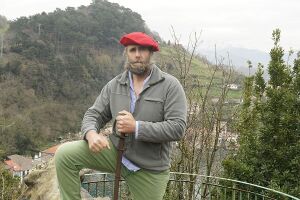Ferdinándism: Difference between revisions
No edit summary |
No edit summary |
||
| Line 1: | Line 1: | ||
{{WIP}} | {{WIP}} | ||
'''Ferdinándism''' or Ferdinándismo ({{wp|Spanish|Isabellan}}:{{wp|International Phonetic Alphabet|[feɾ.di.'nan.diz.mo]}}) is a political and subculture originating from Central Cesylle. Beginning in 1775, Ferdinándism aims to reestablish the [[Grand Republic of Ferdinándia]] with it’s exact ideology ranging from {{wp|Progressivism|Progressive Republicanism}} to {{wp|Christian Democracy|Lumenite Democracy}} | '''Ferdinándism''' or Ferdinándismo ({{wp|Spanish|Isabellan}}:{{wp|International Phonetic Alphabet|[feɾ.di.'nan.diz.mo]}}) is a political and subculture originating from Central Cesylle. Beginning in 1775, Ferdinándism aims to reestablish the [[Ferdinandia|Grand Republic of Ferdinándia]] with it’s exact ideology ranging from {{wp|Progressivism|Progressive Republicanism}} to {{wp|Christian Democracy|Lumenite Democracy}} | ||
[[File:Modern Ferdinándista.jpeg|300px|center|thumb| Modern Ferdinándista on Mont James, c. 2010]] | [[File:Modern Ferdinándista.jpeg|300px|center|thumb| Modern Ferdinándista on Mont James, c. 2010]] | ||
Latest revision as of 22:01, 12 November 2023
This article is incomplete because it is pending further input from participants, or it is a work-in-progress by one author. Please comment on this article's talk page to share your input, comments and questions. Note: To contribute to this article, you may need to seek help from the author(s) of this page. |
Ferdinándism or Ferdinándismo (Isabellan:[feɾ.di.'nan.diz.mo]) is a political and subculture originating from Central Cesylle. Beginning in 1775, Ferdinándism aims to reestablish the Grand Republic of Ferdinándia with it’s exact ideology ranging from Progressive Republicanism to Lumenite Democracy
Followers of Ferdinándism are called Ferdinándistas and have been considered a political minority in Central Cesylle since the fall of the Republic in 1777. While holding little political power they managed to hold out on their beliefs and attempted multiple times to reunite Ferdinándia.
Overtime Ferdinándistas became more of a unique culture holding many old traditions that were phased out in Elaklania and Nastanovo. Because of this they’ve become a symbol of resistance and stubbornness, in Elaklania, Osceola, and Nastanovo there are currently around 100,000 self identified Ferdinándistas.
